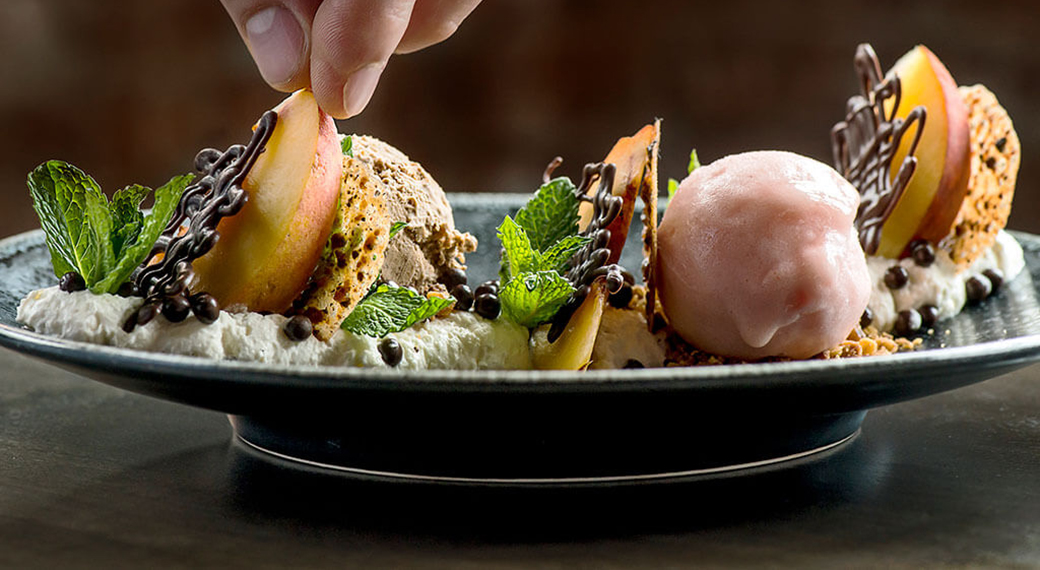Blitz News Digest
Stay updated with the latest trends and insights.
Snap, Crackle, Click: How to Make Your Food Photos Pop
Discover the secrets to stunning food photography that will make your dishes irresistible and your followers hungry for more!
5 Essential Tips for Capturing Mouthwatering Food Photos
Capturing mouthwatering food photos requires more than just a good camera; it’s an art form that combines technique and creativity. First, lighting is crucial. Natural light works best, so try to shoot your food photos near a window during the day. Avoid harsh, direct sunlight, which can create unappealing shadows. Instead, aim for softer, diffused light that enhances the natural colors of the food. Second, consider the composition of your shot. Use the rule of thirds to create a balanced image, and don’t be afraid to experiment with different angles – some dishes look better from above, while others shine when shot at eye level.
Another essential tip is to pay attention to plating. The way you present your food can make all the difference. Use colorful garnishes, and keep the plate tidy by removing any spills or crumbs. Additionally, incorporating props such as utensils, napkins, or ingredients can add context and depth to your photos. Lastly, remember to take your time and review your images. Sometimes the first shot doesn’t capture the full essence of the dish. Don’t hesitate to take multiple photos from various angles to find the perfect shot. With these five essential tips, you'll be well on your way to capturing stunning food photography that makes everyone’s mouth water.

The Art of Food Styling: Make Your Dishes Irresistible in Photos
The art of food styling is more than just arranging ingredients on a plate; it is about creating a visual narrative that captures the attention of your audience. To achieve this, start by selecting a color palette that complements your dishes, making sure that the colors pop against each other. Incorporating natural lighting can greatly enhance the presentation as it highlights textures and flavors, giving your food an inviting appearance. Remember, using clean and simple props can help to frame your dish without overshadowing it, ensuring that the star of the show remains the food itself.
When styling your food for the camera, consider employing techniques such as layering and varying heights to create a sense of depth and interest. Use garnishes wisely; a sprinkle of fresh herbs or a dash of citrus zest can elevate the visual appeal tremendously. Pay attention to the composition by following the rule of thirds and ensuring that the focal point draws the viewer’s eye. Lastly, don’t forget to taste your creations, and embrace the beautiful imperfections; sometimes it is these authentic details that make your dishes truly irresistible in photos.
Why Lighting is Key to Stunning Food Photography
When it comes to food photography, lighting plays a crucial role in making your dishes look irresistible. The right lighting can enhance the colors and textures of food, turning an ordinary meal into a visual masterpiece. Natural light is often considered the best option, as it creates soft shadows and highlights that bring out the details in your food. Studio lighting, on the other hand, allows for greater control and consistency, especially when photographing dishes in various settings. Experimenting with different light sources and angles can help you discover how to create that perfect shot that will captivate your audience.
In addition to natural and studio options, understanding light quality is essential for stunning food photography. Soft, diffused light minimizes harsh shadows and produces a more appealing look for your culinary creations. Using tools like reflectors or diffusers can help to modify the light, allowing you to achieve the desired atmosphere for your photos. Always remember that the way you utilize lighting can dramatically impact not only the aesthetics but also the overall feel of your food images, making it a key factor in food photography success.